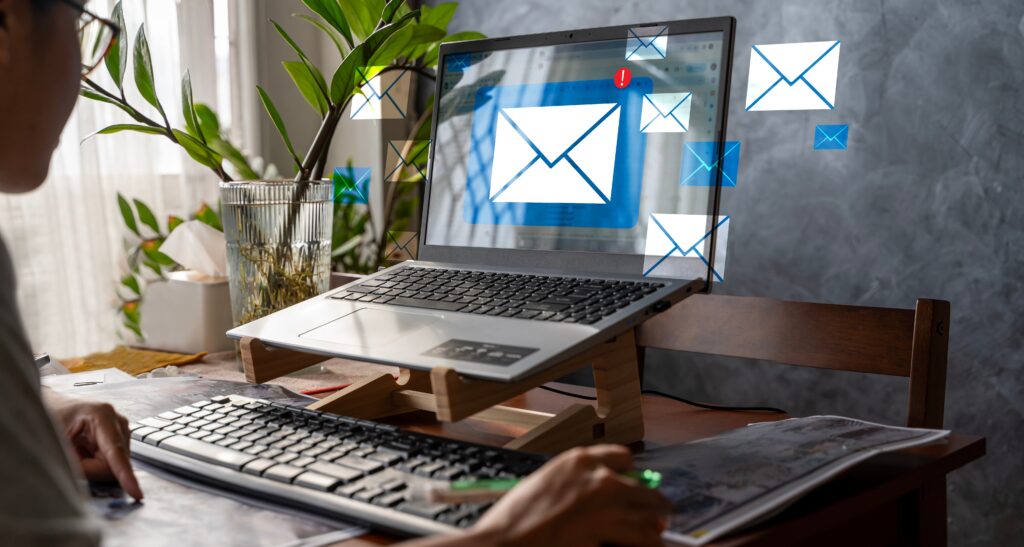The Power of Good Email Marketing
Email marketing is a powerful tool for nonprofits to connect with supporters, share their mission, and drive engagement. With the ability to reach a wide audience directly and cost-effectively, email remains one of the most effective channels for nonprofit outreach. However, to maximize its impact, it’s essential to follow best practices. This article will guide you through building a quality email list, crafting compelling content, and analyzing your campaigns to ensure your email marketing efforts deliver the best possible results.
Building a Quality Email List
Opt-in Strategies
Building a quality email list begins with effective opt-in strategies. Encouraging website visitors to subscribe is crucial for growing your list. One effective method is to use lead magnets, such as downloadable resources (e.g., eBooks, guides) or exclusive access to events, in exchange for an email address. Sign-up incentives like discounts on event tickets or free merchandise can also entice visitors to join your mailing list.
To ensure your email list stays clean and effective, explore our post on How Automation Can Clean Your Mailing List for You for valuable tips on maintaining a high-quality subscriber base.
Tips for Effective Opt-Ins:
– Visible Sign-Up Forms: Ensure that your sign-up forms are easy to find on your website. Consider placing them on your homepage, blog pages, and at the end of articles.
– Clear Value Proposition: Communicate the benefits of subscribing, such as receiving updates on your nonprofit’s impact, special event invitations, or exclusive content.
For further reading on building an email list, check out HubSpot’s guide to lead generation.
Segmenting Your Audience
Once you’ve built your email list, segmenting your audience allows you to send targeted messages that resonate with different groups of subscribers. By grouping your audience based on interests, donation history, engagement levels, or demographics, you can tailor your content to better meet their needs and expectations.
Benefits of Segmentation:
– Increased Engagement: Targeted emails are more likely to be opened, read, and acted upon because they are relevant to the recipient’s interests.
– Improved Donor Relationships: By sending personalized messages, you strengthen the relationship with your donors, making them feel valued and understood.
For more insights into email segmentation, refer to Mailchimp’s segmentation strategies.

Crafting Effective Email Content
Writing Compelling Subject Lines
The subject line is the first thing recipients see, and it greatly influences whether or not they open your email. Crafting attention-grabbing subject lines that avoid spam triggers is essential for maximizing open rates.
Tips for Subject Lines:
– Keep it Short and Sweet: Aim for subject lines that are concise, typically under 50 characters.
– Use Actionable Language: Encourage readers to take action, such as “Join Us,” “Discover How,” or “Help Us Make a Difference.”
– Avoid Spammy Words: Words like “Free,” “Buy Now,” or excessive use of exclamation points can trigger spam filters.
For additional tips, see Campaign Monitor’s guide to writing subject lines.
Designing the Email Body
Designing an effective email involves balancing text and visuals to create a layout that is both engaging and easy to read. A clean, well-structured design enhances the reader’s experience and increases the likelihood of them taking the desired action.
Best Practices for Email Design:
– Responsive Design: Ensure your emails are mobile-friendly, as a significant portion of recipients will view your emails on smartphones.
– Visual Hierarchy: Use headings, subheadings, and bullet points to break up text and guide the reader through the content.
– Call-to-Action (CTA): Place clear, prominent CTAs that tell readers exactly what you want them to do next, such as “Donate Now” or “Learn More.”
For more on email design, explore Litmus’s best practices for email design.
Personalization and Storytelling
Personalization goes beyond using the recipient’s name. It involves tailoring the content of your emails to reflect the recipient’s preferences, behaviors, and past interactions with your nonprofit. Incorporating storytelling into your emails can create an emotional connection with your audience, making your message more compelling.
Looking to inspire your donors through storytelling? Check out our post on 5 Email Storytelling Tips to Inspire Donors to Give for expert advice on crafting compelling narratives.
Personalization Techniques:
– Dynamic Content: Use data from your CRM to dynamically adjust the content of your emails based on the recipient’s profile.
– Storytelling: Share stories of individuals or communities that have benefited from your nonprofit’s work, highlighting the impact of donations and volunteer efforts.
For tips on personalization, see Salesforce’s guide to email personalization.
Analyzing and Optimizing Email Campaigns
Tracking Key Metrics
Analyzing your email campaigns is critical to understanding their effectiveness and making informed improvements. Key metrics to track include open rates, click-through rates (CTR), and conversion rates.
Tools for Analysis:
– Google Analytics: Integrate your email campaigns with Google Analytics to track the behavior of users who click through from your emails.
– Email Service Providers (ESP): Most ESPs, like Mailchimp or Constant Contact, provide detailed analytics dashboards to monitor campaign performance.
For a deeper dive into email metrics, visit Google Analytics’ email campaign tracking.
A/B Testing
A/B testing involves sending two variations of an email to small segments of your audience to determine which version performs better. You can test different elements, such as subject lines, email content, design, and CTAs.
How to Conduct A/B Tests:
– Select One Variable: Test one element at a time to isolate its impact on performance.
– Analyze Results: Use the data from the test to identify which variation performed better, then apply the winning version to your broader audience.
For a comprehensive guide, refer to HubSpot’s A/B testing resources.
Maintaining Compliance
Email marketing regulations like GDPR, CAN-SPAM, and others are in place to protect consumers from unsolicited emails. Ensuring compliance with these regulations is essential to avoid penalties and maintain the trust of your subscribers.
Best Practices for Compliance:
– Opt-In Confirmation: Use double opt-in methods to ensure that all subscribers have explicitly consented to receive your emails.
– Easy Unsubscribe: Include a visible and functional unsubscribe link in every email to comply with regulations and maintain list hygiene.
For compliance guidelines, check out the GDPR compliance guide and the FTC’s CAN-SPAM Act compliance.

A Powerful Tool for Nonprofits
Email marketing is a powerful tool for nonprofits to engage with their audience, drive donations, and build lasting relationships. By building a quality email list, crafting compelling content, and continuously analyzing and optimizing your campaigns, your nonprofit can maximize the impact of its email marketing efforts. Remember, the key to success lies in ongoing refinement and a commitment to understanding your audience’s needs and preferences.
At Elevation, we specialize in crafting tailored email marketing campaigns that not only reach your audience but also inspire action. Discover how our Email Marketing Services for Nonprofits can elevate your outreach to the next level. Let’s work together to ensure your message is heard!


